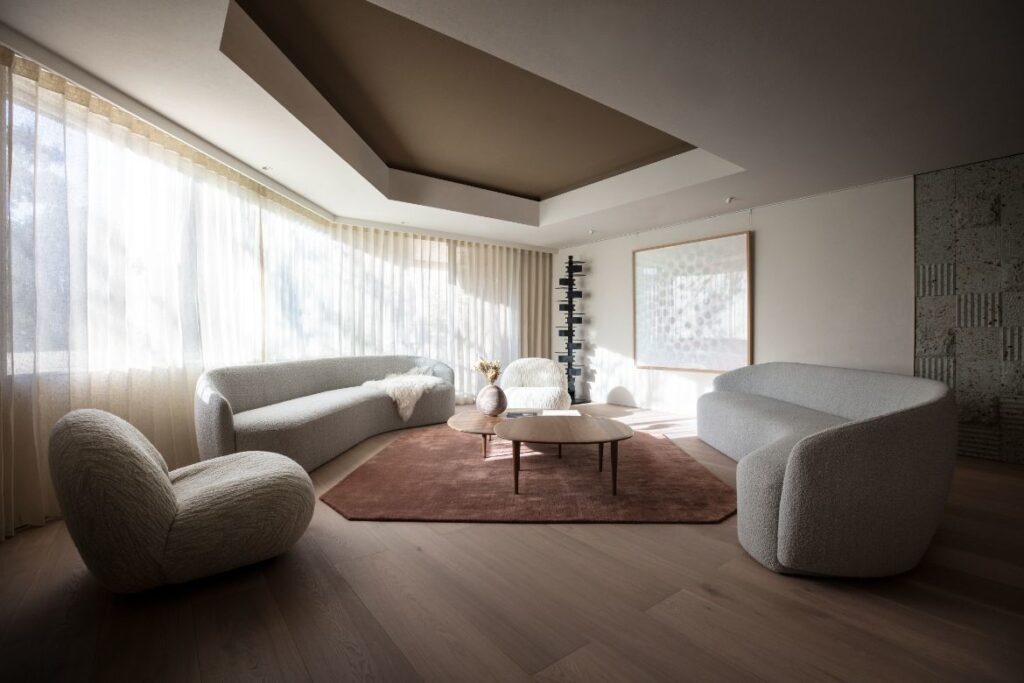Japandi is a term that has emerged in recent years to describe the marriage of Japanese and Scandinavian design. Here’s what you need to know about this hybrid style.
25 September 2023
Top image: Design by Happe Design Atelier
Text by Lookbox Living
In the world of interior design, Japandi is a concept that has gained significant attention and popularity in recent years.
A fusion of Japanese minimalism with Scandinavian comfort and warmth or hygge, Japandi design embodies the essence of simplicity, functionality and serenity.
It can admittedly be confusing to know where to begin with this hybrid style, so let’s break it down.
Japandi design is born from the marriage of two distinct yet complementary design philosophies:
Japanese Minimalism: Japanese design principles focus on simplicity, functionality, and the appreciation of natural elements. Clean lines, neutral colour palettes, and a sense of tranquility are key elements of Japanese minimalism.
Scandinavian Cosiness: Scandinavian design emphasises warmth, comfort, and the use of natural materials. It often features light-coloured wood, cosy textiles, and a strong connection to nature.

The merging of these two aesthetics results in a design style that values balance, mindfulness, and a connection to nature. Japandi design embraces imperfections and the Japanese philosophy of wabi-sabi, and celebrates the beauty of simplicity, making it a perfect choice for those seeking a calming and uncluttered living environment.
Also watch this: Tranquil indoor-outdoor penthouse living
#1 Colour Palette
Neutral Tones: Start by selecting a neutral colour palette for your walls and larger furniture pieces. Whites, greys, soft beiges, and muted pastels create a calming backdrop for Japandi design.
Accents of Black: Introduce subtle contrasts with black accents in the form of hardware, picture frames, or decor items. This adds depth and visual interest to the space.

#2 Furniture:
Simple Lines: Choose furniture with clean lines and minimalistic designs. Avoid ornate details or overly decorative pieces. Japanese-inspired furniture often features low profiles, while Scandinavian furniture may incorporate gentle curves and organic shapes.
Natural Materials: Opt for furniture crafted from natural materials like wood, bamboo, or wicker. These materials add warmth and texture to the space.

#3 Flooring:
Wooden Floors: Hardwood or light-coloured wood laminate floors work well in Japandi interiors. They provide a sense of continuity and a connection to nature.
#4 Lighting:
Soft and Warm Lighting: Select soft, warm lighting fixtures that create a cosy ambience. Paper lanterns, pendant lights with wooden accents, and minimalist floor lamps can be great choices.

#5 Textiles:
Natural Fabrics: Use natural textiles like linen, cotton, and wool for upholstery, curtains, and bedding. Soft, earthy tones and simple patterns or textures can enhance the Japandi look.
#6 Decor:
Minimalist Decor: When it comes to decor items, less is more in Japandi design. Focus on a few well-chosen pieces that have meaning to you, such as handmade ceramics, bonsai trees, or carefully selected artwork.
Indoor Plants: Incorporate indoor plants to bring a touch of nature indoors. Consider bonsai, succulents, or other low-maintenance plants that fit the minimalist aesthetic.

#7 Storage Solutions:
Hidden Storage: Invest in furniture with hidden storage compartments to maintain a clutter-free environment. Cabinets and shelves with clean lines and concealed handles are excellent choices.
#8 Room Layout:
Open Spaces: Japandi design often emphasises open, uncluttered spaces. Arrange furniture to create flow and promote a sense of openness in your rooms.
Japandi design embodies the artful fusion of Japanese minimalism and Scandinavian cosiness, resulting in a serene and inviting atmosphere within the home. Embracing this style can lead to a more mindful and tranquil home that reflects one’s appreciation for simplicity and the beauty of nature. It’s little wonder then that this style has gained such interest in recent years.
We think you may also like Wabi-sabi: How to incorporate this philosophy and style into your home
Like what you just read? Similar articles below

Borrowed landscape and a highly considered interior outfit saw L Architects transpose this ground floor unit to look and feel more akin to landed living.

Nodding to modernism, while sitting firmly in the contemporary, Sanctuary House by Mim Design is a delight of circles and form.